Interview: Muhammad Ali Sadpara: Maestro of the 'Killer Mountain'
Dream WanderlustPhotographs: Muhammad Ali Sadpara
Category: Expedition, Climbing, Interview
Date of Publication: Nov 5 , 2019
Muhammad Ali Sadpara, 43, the Nanga Parbat Veteran, set out on his mountaineering venture as a high-altitude porter more than two decades ago. Best known for his Winter expeditions on to the eight-thousanders, Sadpara had accompanied some of the greatest alpinists in recent times. He, along with other Winter wizards - Alex Txikon and Simone Moro, made the historic first Winter ascent on Nanga Parbat in 2015-16. He also happens to be the first and only climber to have summited the 'Killer Mountain' of Gilgit-Baltistan in all four climbing seasons - Winter, Spring, Summer, Autumn.
In course of time, he has successfully added numerous feathers on his cap as a guide-cum-mountaineer. Sadpara, the ace climber from Skardu valley, made his last summit of this year on to Manaslu without supplemental oxygen this September, alongside other successful expeditions on to Lhotse and Makalu in May. His reminiscences of his career so far, took us to a trip down memory lane. In an exclusive interview with Dream Wanderlust, he reveals his upcoming projects - Winter expeditions to K2 and Everest, his climbing philosophy, and anecdotes about his gruelling manoeuvre to turn the expeditions into successful ones.
Interview with Muhammad Ali Sadpara
DW: You started your career as a high-altitude porter. Now you are globally-recognized as a professional climber/mountain guide on 8000m expeditions. How do you look back on your journey so far?
Muhammad Ali: Well, the journey has been fantastic. I remember the times when we used to see HAPs going for expeditions. The kids of my age were left behind due to the lack of equipment. Since everyone gets a golden chance in life, I got mine early when one of the porters couldn't go. I was selected to join the expedition. Since then I couldn't get off the mountains. The journey is definitely marked with failures and successes. But the love for climbing mountains never held me back.
DW: You have climbed Nanga Parbat four times. What are the driving factors behind you that keep you going back there?
Muhammad Ali: The driving factors were many. The echo of "Killer Mountain" was driving me nuts. And I have been looking for all the chances to go there and test the "Killer Mountain". Therefore, doing it once just couldn't cater to my thirst. The other reason is the incident of 2013 when terrorists killed our fellow climbers. People stopped going for Nanga Parbat. The government was not helping to improve the soft image of people around and their economic situation went down drastically. Henceforth, I took it as a challenge to go there again and again so that people would understand that this area is peace-loving and friendly. That is also why I did it in all four kinds of weather. Spring, Autumn, Winter, and Summer.
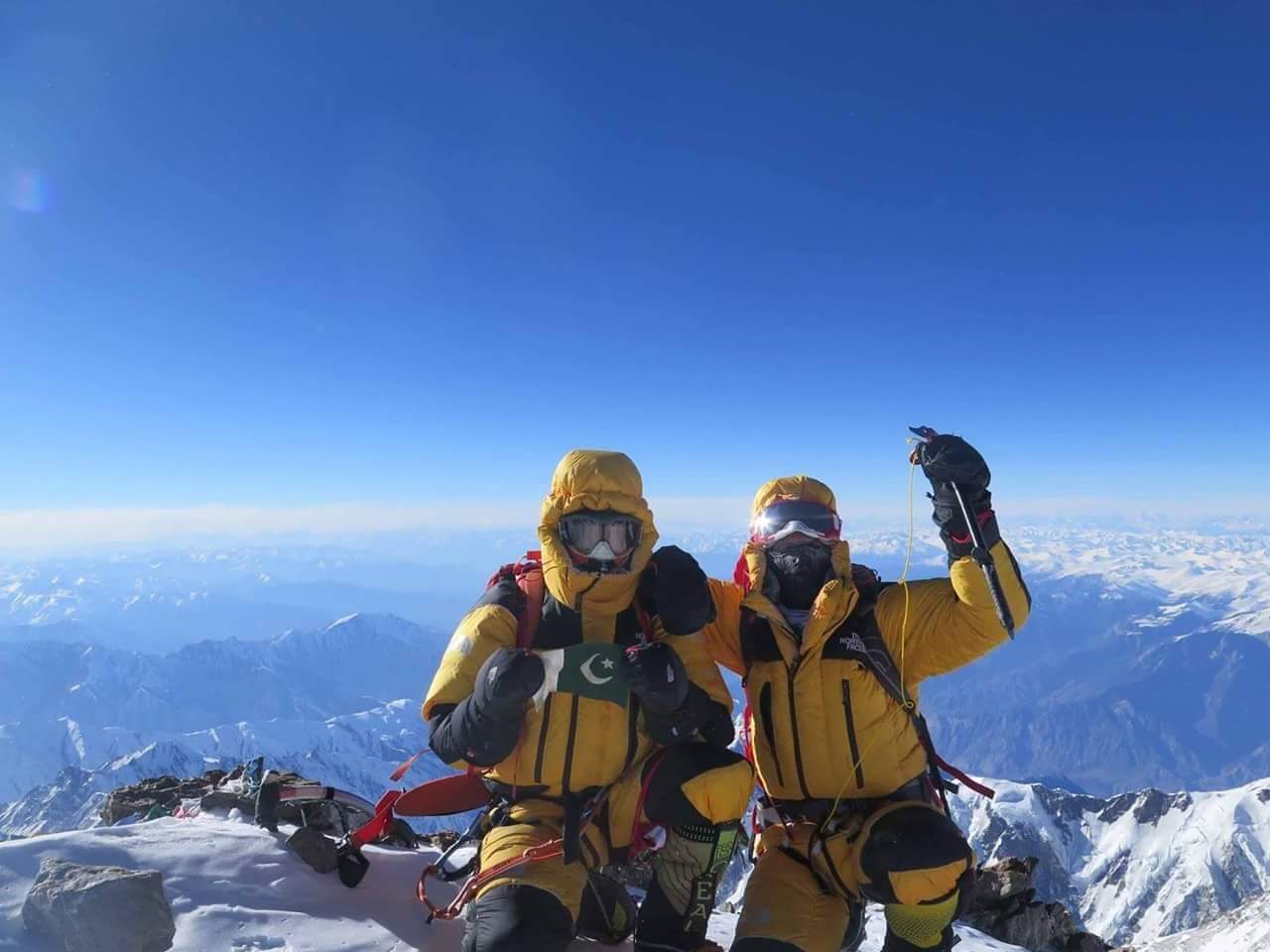
Simone Moro and Muhammad Ali Sadpara on the top of Nanga Parbat [R to L] - Nanga Parbat Winter Expedition 2015-16
DW: After an attempt on Nanga Parbat in the Winter of 2014-15, in 2015-16, you, along with Alex Txikon and Simone Moro became the first team to summit Nanga Parbat in Winter. Please share the experience of this incredible feat.
Muhammad Ali: The failure of 2015 taught us a lot. I was in very good shape. We left Camp-4 for the summit at 11pm which was a mistake to leave so early. I was leading the summit push and made another mistake. I didn't keep up my pace with the rest of the team and left them far behind. The purpose was to find a suitable way up for the others. Because the usual way seemed to be avalanche prone. So, I decided to take another way. After some recce, I went back to the normal route and stayed there waiting for the rest of them. They came after an hour and by that time, I was numb. The temperature was -48°C which played its role pretty well. I was unable to think and didn't know which way to go. I could not feel my toes. It made me decide to go back to Camp-4. The rest of my team followed and went back as well. My last expedition was abandoned because of my frost-bitten toes.
In 2016, we were again the same pals but different teams. Tomek (Tomasz Mackiewicz) and Elisabeth (Elisabeth Revol) were a team. On the other hand, Simone Moro and Tamara Lunger were trying from a different route. I was with Alex Txikon and Daniele Nardi. Adam Bielecki was trying alone in Alpine style. Later, he got injured and bruised his hand badly. So, he had to leave the expedition. Nardi was with us till Camp-2 but then, even he had left due to some personal reasons. We made two teams, Tamara was with me, and Alex along with Simone, made another team, and in turn, we fixed ropes and did the load-ferry. We easily made it up to Camp-4. I decided not to make the previous mistake again and left Camp-4 at 5am. Near the summit, I took a relatively steeper but shorter way and reached the summit. Alex and Simone joined me shortly but Tamara was tired. She was so close but decided not to take any further risk. And her decision was right which I appreciate. I hurried down to help her reach Camp-4 while Alex and Simone decided to stay awhile at the summit. The expedition ended well.
DW: Simone Moro went on record to praise you, "Ali is to Nanga Parbat what Tenzing was to Everest." It must be a special experience for you to have made history as a mountaineer from Pakistan on the Killer Mountain. Your thoughts.
Muhammad Ali: Simone is a good climber. Having that kind of compliment always swells my heart. The reality is that, of all the mountains, I love Nanga Parbat the most. It's the God of mountains and I am its humble son.
DW: This first Winter ascent of Nanga Parbat was your third ascent on it. Tell us about the preparatory phase, route-opening, and the final approach you took on the Nanga Parbat in Winter.
Muhammad Ali: Well, whenever you go climbing a mountain, you acclimatize yourself irrespective of the weather. Before leaving for the expedition, we exercise and run. I am always very specific about food. In the mountains, we then do short trips to low altitudes and acclimatize ourselves. The only difference between Summer and Winter is your will power and quality of equipment.
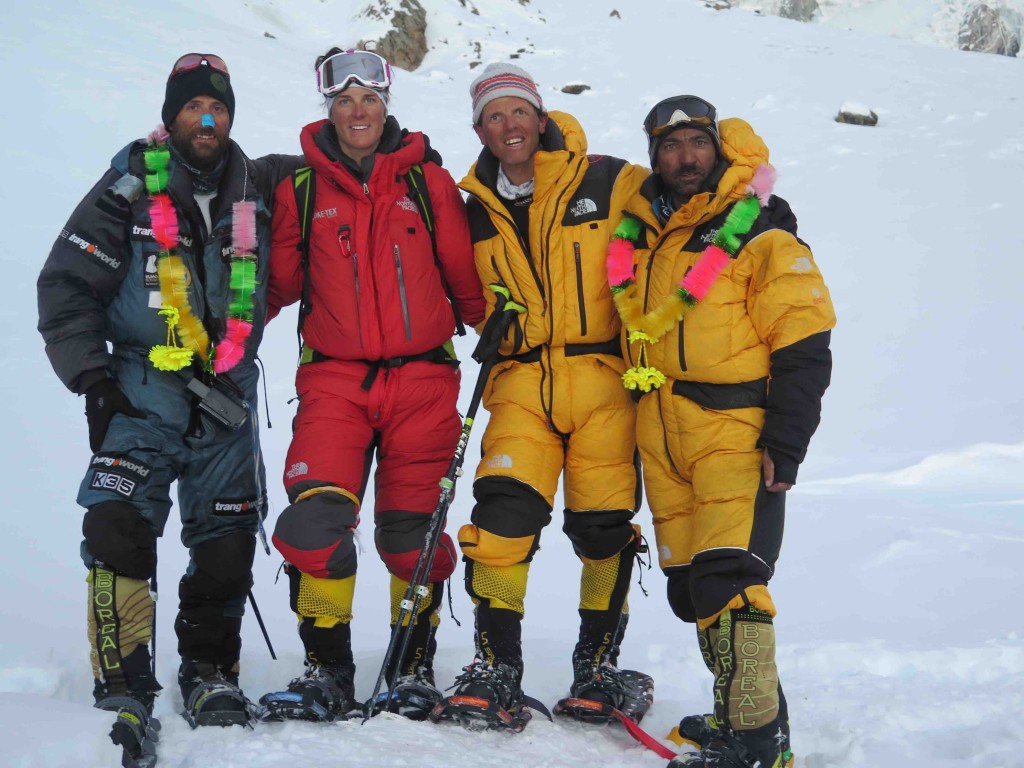
Alex Txikon, Tamara Lunger, Simone Moro and Muhammad Ali Sadpara [L to R]
DW: You again teamed up with Alex Txikon for Winter ascent of Everest last year without bottled oxygen. Share your thoughts on this successful partnership.
Muhammad Ali: Both of us were looking for bigger challenges. What was better than Everest without bottled oxygen? We were well-prepared physically and mentally. We planned for two peaks. Pumori (7161m) and Everest and split into two teams. I went for rope-fixing on Pumori and Alex went with other Sherpas on Everest. I fixed rope till Camp-3, and Alex with his team, did it till Camp-2. Afterwards, we met at the Base Camp. The plan was to go for Pumori first for acclimatization which we did without any hazard. Then we left for Everest. After Camp-3, the windstorm started and we barely could fix rope till Camp-4. We had to come back to the Base Camp. The storm went for days when we found a very small window to attempt. We tried and reached Camp-4 again but the wind was not letting us move further at all. That's when we decided to leave.
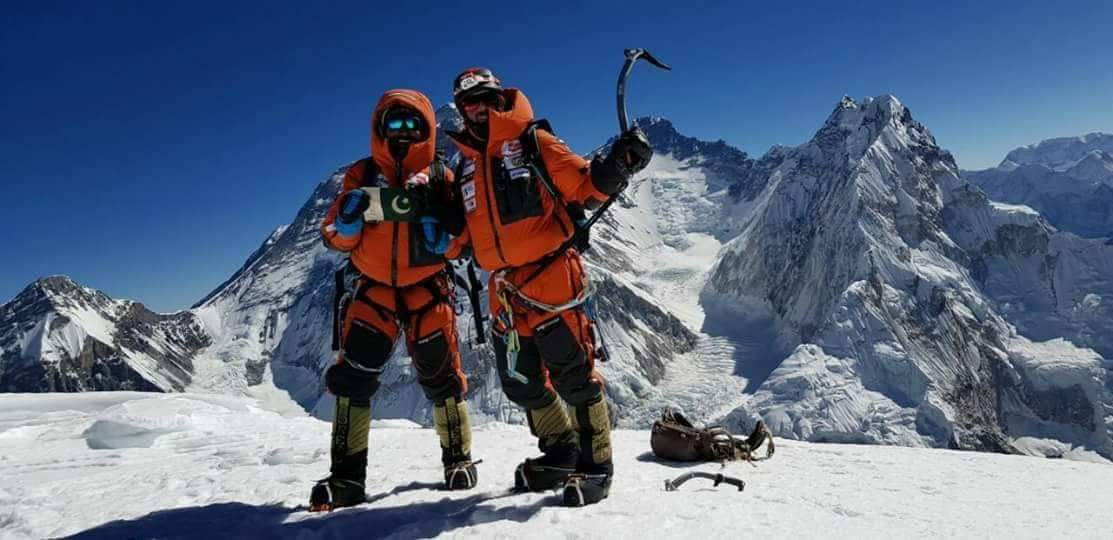
Alex Txikon and Muhammad Ali Sadpara on the top of Pumori [R to L] - Everest Winter Expedition 2017-18
DW: What is your plan for the next attempt on Everest in Winter? Why is climbing Everest without oxygen in Winter significant for you? Is it because climbing Everest is too commercialized with supplemental oxygen?
Muhammad Ali: Well, climbing Everest in Winter is one of my goals. I'm looking forward to team up with some good climbers. I can't say when but hopefully in the near future. For me, climbing without oxygen is significant in all weathers. Winter is not special. It shows a deep passion for the sport.
DW: Tell us about the 5-year-project - 'Beyond Mount Everest'. How important was it for you to team up with record-setting alpinist Marc Batard?
Muhammad Ali: I'm working with Marc on this project. We are climbing together in French Alps and also, some other areas. It's definitely a good experience for me. We are co-ordinating very well and I've learned many things working with such a passionate climber and a very good human being.
DW: How special is it to climb with the world's top-class alpinists?
Muhammad Ali: I love to climb with technical climbers who fix their own ropes and carry their own luggage. I've worked with many clients and partners. The good ones are very few. The ones who take mountaineering as a sport, not business, are closer to my heart.
DW: After the successful expedition on Manaslu in September 2019, you became the first and only mountaineer from Pakistan to have summited eight 8000m peaks - more than half of all 8000m peaks in the world. How do you plan to climb the other seven?
Muhammad Ali: Thanks to Allah for my recent achievements. I'm going to complete 14 peaks as soon as possible. Pakistan Army sponsored my recent three expeditions which helped me a lot getting closer to my dream. This kind of help will ease my way to get 14 feathers in my cap.
DW: Besides your Manaslu expedition in this autumn, and two other successful expeditions on Makalu and Lhotse in Spring this year, you have climbed in all seasons across the Himalayas and the Karakorams in your career. How significant is it to climb irrespective of any season?
Muhammad Ali: Every season offers different charm in climbing. You need to know the chemistry of ice and snow in all seasons. And then your body reacts differently which you need to prepare for, both mentally and physically. But to me, this is climbing mountains after all. I only love to climb irrespective of seasons.
DW: Your first Winter expedition was on Broad Peak in 2008-09 with Artur Hajzer, Robert Szymczak, Don Bowie. Since then, you've been part of multiple Winter expeditions on Gasherbrum I in 2011-12, and K2 in 2014-15. Do you think, with your expertise and experience, it's the best phase of your career for Winter expeditions?
Muhammad Ali: I think I'm in the best phase of my climbing career. Be it Winter or Summer. I've seen many climbers getting scared when they reach the Base Camp. But to me, it is where my world starts. Besides, Winter is just an extra level of adventure and the difficulty which I like. All you need to do in Winter is to make your choice carefully. Reaching the summit and coming back to the Base Camp are of secondary and tertiary importance respectively. The only thing is to come back with all your limbs intact and the people you set off with. Without frostbite. Without injuries. And without making mistakes. There are people around you who might need you at some crucial point. What will you do if you are a burden yourself? So if I see I'm not fit to climb anymore, I won't climb. But now I think I'm very well to climb.
DW: Previously, you expressed your keen interest to climb K2 in Winter, aside Everest. How and when are you planning to make these attempts?
Muhammad Ali: I'm looking forward to climbing K2 and Everest in Winter. As soon as possible.
DW: Your first 8000er was Gasherbrum II in 2006. Then two back-to-back summits on Nanga Parbat in 2008, 2009, and so on. With your experience in the highest mountains in the Karakorams, how differently do you wish to explore it here now? Any plans for 7000m peaks and lower than that?
Muhammad Ali: I've climbed 7000m peaks and I'll climb more in the future. There are many small peaks in the Karakorams which are very technical and challenging. A lot of them are virgin peaks where I intend to open routes. And for some 7000m and 6000m peaks, I'm planning to explore more and establish new routes. This planning is a part of my Youth Programme which I'll initiate soon.
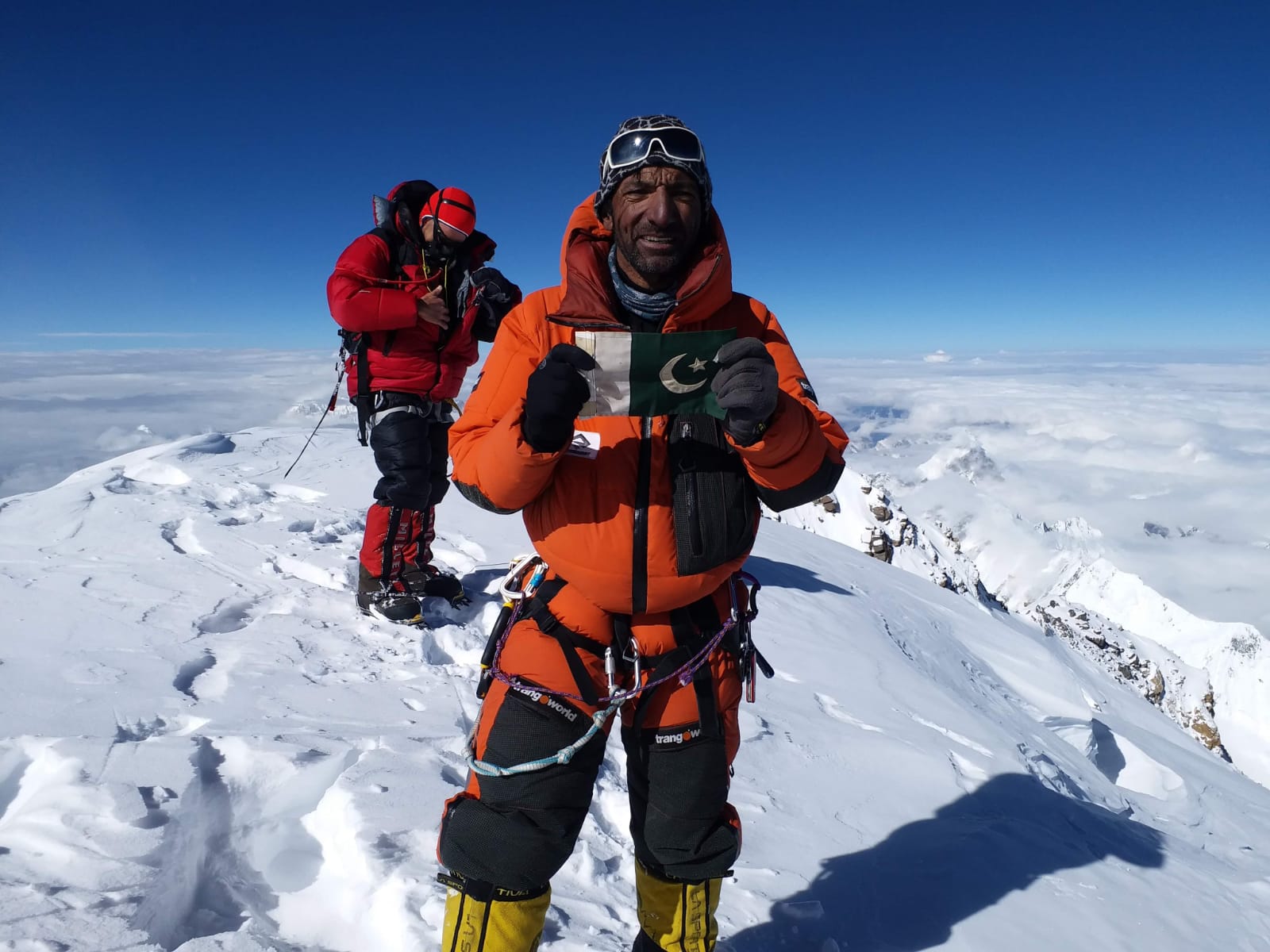
Muhammad Ali Sadpara on the top of K2 in 2018
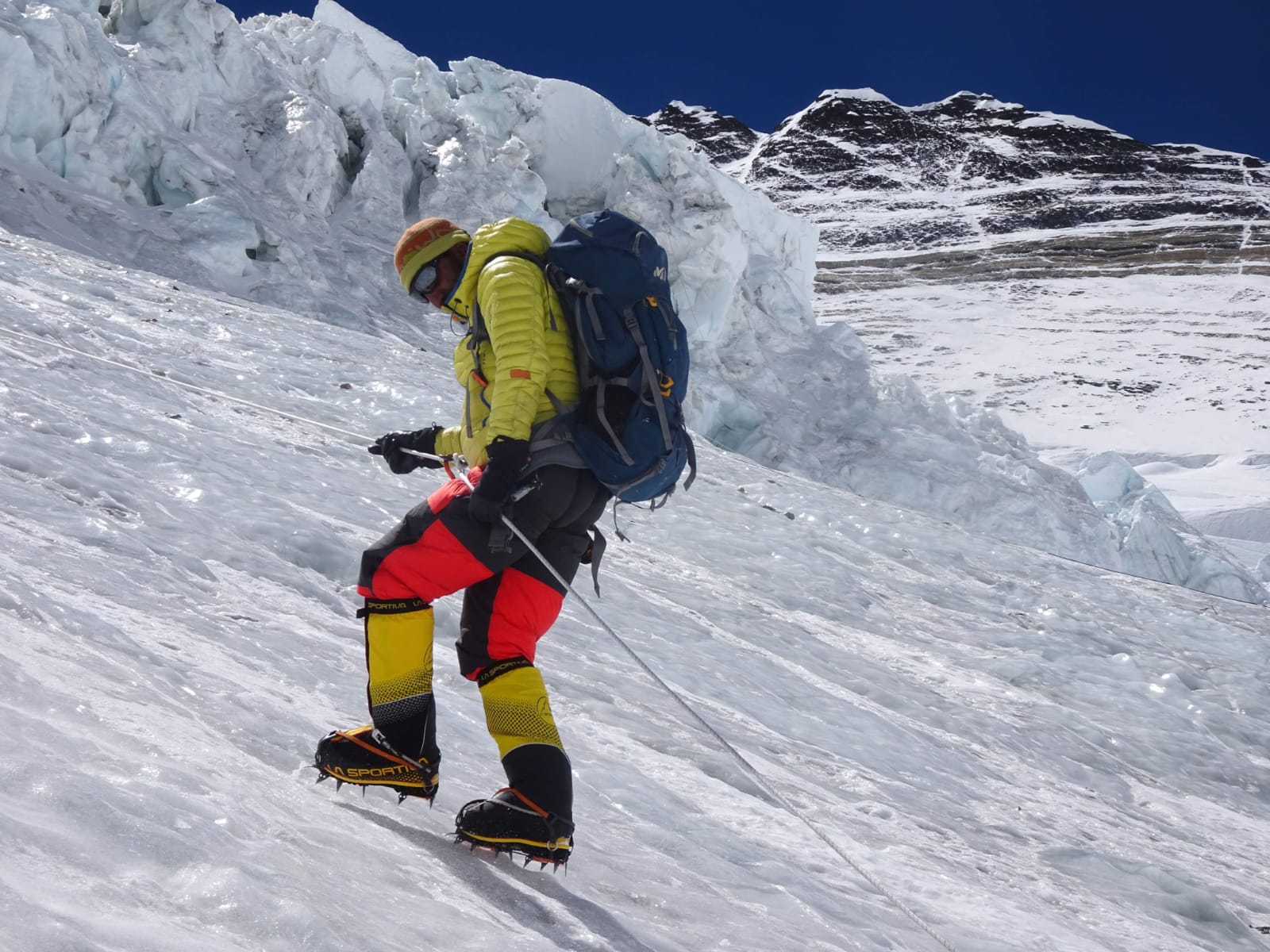
Muhammad Ali Sadpara fixing rope on Lhotse in 2019
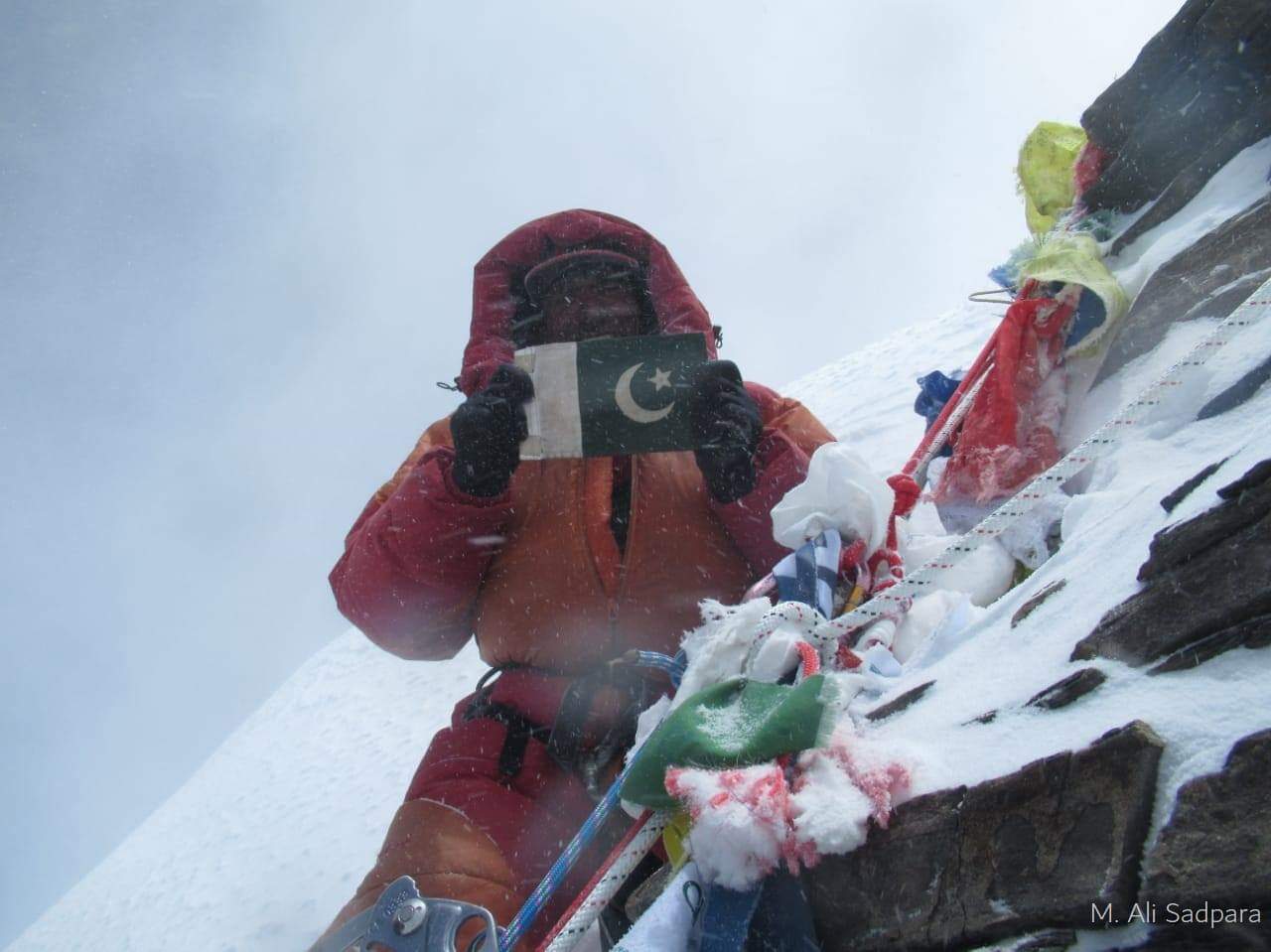
Muhammad Ali Sadpara on the top of Lhotse in 2019
Career Summary
2006 - Gasherbrum II
2006 - Spantik Peak
2008 - Nanga Parbat
2008 - Muztagh Ata (China)
2009 - Nanga Parbat
2010 - Gasherbrum I
2015-16 - Nanga Parbat (First Winter Ascent)
2017 - Broad Peak
2017 - Nanga Parbat
2018 - Pumori Peak (First Winter Ascent, as the acclimatization climb for Everest Winter Expedition 2017-18)
2018 - K2
2019 - Lhotse
2019 - Makalu
2019 - Manaslu
Related Articles
Place your ad here. Call +919163231788 or Contact Us









